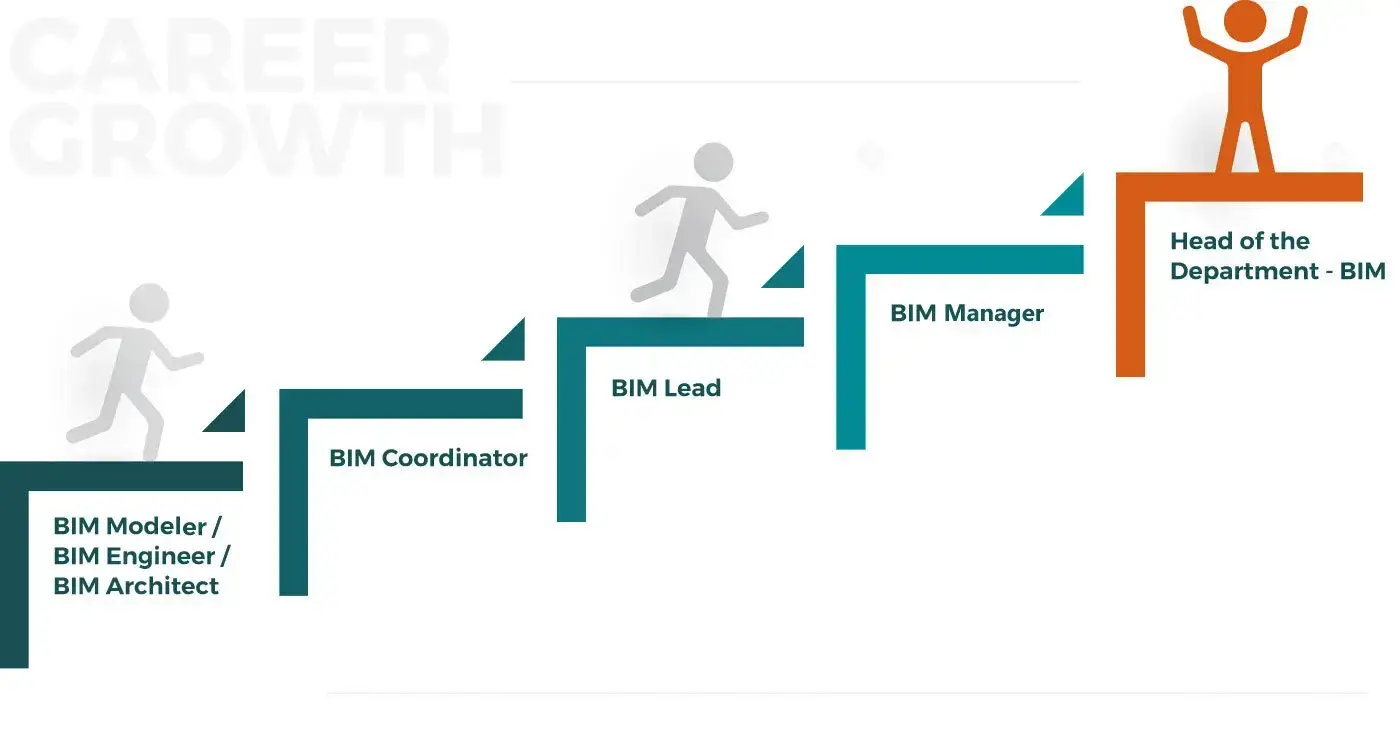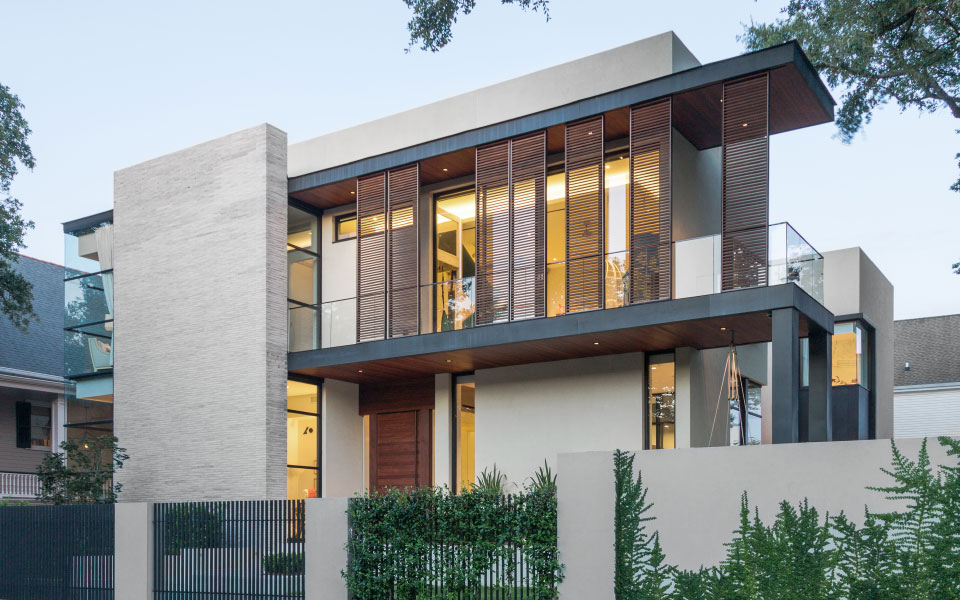
BIM (Building Information Modelling), a reflection of the evolving Architecture, Engineering, and Construction (AEC) industry, offers a digital representation of both the physical and functional aspects of space, significantly improving the way built environments are designed, constructed, and maintained.
As a concept, BIM is rapidly becoming an essential part of the AEC workflow—promoting sustainability, enhancing collaboration, and reducing both costs and design clashes.
In recent years, the BIM market has witnessed exponential growth, driven by its seamless integration into AEC processes.
Countries like the UK have even mandated the use of BIM for public infrastructure projects, reinforcing the notion that BIM is not just a trend, but the future of the AEC industry.
Curious about how to kick-start your career in BIM?
This blog is a great starting point for understanding industry expectations and taking your first step into the world of Building Information Modelling. Because starting your BIM career might seem a tedious task.
Why BIM Skills Are Critical for AEC Jobs in 2025?
Today, BIM has become a critical skill in the AEC industry, as it helps reduce errors and ensures minimal to no clashes. Moreover, it promotes sustainability and simplifies building maintenance post-construction. Before starting a career in BIM, you need to understand why it is important.
Here are the top 5 reasons why BIM is essential:
1. Fostering Better Communication
BIM enables smoother communication between architects, engineers, and contractors by keeping everyone aligned within the same workflow. This alignment helps resolve clashes faster and ensures that all stakeholders are on the same page throughout the project lifecycle.
2. Making Work Efficient
BIM not only shortens project timelines but also enhances efficiency by reducing costs associated with delays. With all stakeholders collaborating on a unified platform, each gains a clearer understanding of the project and their role in it.
3. High in Demand
With several countries mandating BIM for public projects due to its cost-effectiveness and efficiency, BIM-related roles are in high demand. Now is the ideal time to incorporate BIM skills and software into your workflow to unlock better career opportunities.
4. Sustainable and Advanced
BIM empowers engineers and architects to assess and improve energy efficiency, leading to greener, more sustainable designs. Rather than working against the environment, BIM encourages integration through passive design strategies, resulting in smarter and more eco-friendly construction.
5. Evolving Roles
BIM has transformed traditional job roles, making them increasingly tech-centric. As the industry rapidly digitalises, upskilling in BIM is no longer optional—it's essential. Staying ahead of these changes is crucial for long-term relevance in the AEC field.
Also Read - 8 BIM-related Technical and Soft Skills You Need for an Excellent BIM Career
Essential BIM Software You Must Master
Mastering BIM requires knowledge of the right tools. BIM software skills is the stepping stone to starting a career in BIM. Here is a list of the essential BIM tools:
1. Revit
It is the key BIM software skill that allows for the creation of advanced 3D models. While supporting multi-disciplinary collaboration, it provides detailed documentation helping both architects and engineers. This makes it an essential tool for design and collaboration.
2. Navisworks
Another product of Autodesk, it allows for clash detection and creation of 4D models that are both intuitive and stimulating. It also helps improve coordination and reduce clashes with advanced detection.
3. Enscape
It acts as a real-time visualising and rendering tool that integrates well with Revit. It is used by architects and designers alike to create an immersive walkthrough of the project while maintaining its technicality and complexity. Thus enhancing client communication.
4. Plannerly
Plannerly, as the name suggests, is a tool that helps in planning and tracking the BIM model. It streamlines the BIM management with task tracking and compliance checks. Moreover, it makes sure that the team stays organised and follow the BIM standards.
5. Dynamo
It is a visual programming tool that integrates well with Revit to automate repetitive tasks, generative design, and complex parametric modeling. This makes it essential to maintain consistency in the project.
You can explore all BIM Software Tools here!
Key BIM Job Roles & Skills

As BIM continues to evolve, so do BIM roles. Here are the key BIM roles with each requiring a unique set of skills to ensure efficient project execution and collaboration.
1. BIM Modeller
As the name suggests, they model or create 3D digital models. These models vary based on design flow, be it from Architecture, Structural, or MEP (Mechanical, Electrical, Plumbing). This is a crucial role that makes sure that the project meets the BIM standards and at the same time, meets the client's requirements.
2. BIM Coordinator
They act as coordinators between various stakeholders and departments. They help detect clashes between architects, engineers, and contractors on the BIM workflow to save time and money. Making sure everyone adheres to the BIM standards.
3. BIM Technician
They provide technical support when it comes to maintaining the BIM model. They help bring out detailed documentation and keep the data within the BIM model accurate and up to date. They have strong problem-solving skills.
4. BIM Manager
The BIM manager oversees the whole project. Making sure it meets the BIM standards and requirements all the time. This role is a mix of technical and leadership skills, and the person has to coordinate BIM implementation throughout the project.
To explore all job roles that are related to BIM, explore the full list!
What Employers Look for in BIM Candidates?
1. Software proficiency
It is really important to be efficient with the right skills and tools, some of which include Revit, Navisworks, Dynamo, and Enscape, as explained above. Without a thorough understanding of this software, you can’t call yourself a BIM professional. Moreover, a relevant portfolio adds to the value of your candidature.
2. Certificates
Certificates are a great way to distinguish yourself from the rest. It shows the extra mile you went and translates your passion for the curriculum and BIM. Online BIM certification is the wisest choice in today’s hustle culture for freshers and working professionals alike. Moreover, it adds credibility to your portfolio along with the added benefits—a certification brings a guided and well-structured course framework. Moreover, it also includes important resources to succeed in the real world.
3. Practical Experience
You might be a fresher, but still, job roles ask for practical experience. This gap can be filled through a portfolio and personal projects, where you can showcase your understanding of the skills. Moreover, another way is to do internships and obtain letters of recommendation to further enhance your skills and present them as practical skills to the world, when and however needed.
Certifications & Training for BIM Careers
Novatr is revolutionizing BIM education with world-class BIM Professional Courses, empowering AEC professionals to lead the industry in 2025. Our innovative, hands-on training outshines competitors, delivering the precise skills employers seek. While Autodesk (e.g., Revit Certified Professional), Bentley, BuildingSMART, and Graphisoft offer certifications, they can’t match Novatr’s industry-aligned curricula and real-world project focus. Designed by top AEC experts, our courses for architects, civil engineers, and MEP engineers ensure you dominate the BIM job market. With Novatr, you’re not just learning—you’re building a future-proof career. Start your journey with Novatr and redefine what’s possible in AEC. Check out our top certification programs to start your career in BIM.
1. BIM Professional Course for Architects
Novatr’s 7-month online course equips architects with 15+ BIM tools, including Revit, visual programming, and 4D-6D BIM workflows. It features a RIBA and ISO 19650 capstone project to showcase advanced design skills. Developed by experts from firms like Populous and Jacobs, it drives a 60% average CTC hike. Perfect for roles like BIM Architect or Design Coordinator.
2. BIM Professional Course for Civil Engineers
This 7-month online course trains civil engineers in BIM software, material quantification, and construction sequencing. Hands-on exercises build skills in structural modeling and quantity takeoffs. Ideal for infrastructure projects, it prepares you for roles like BIM Structural Engineer. Join Novatr to master industry-relevant workflows.
3. BIM Professional Course for MEP Engineers

Novatr’s online MEP course masters Revit MEP, clash detection, and system integration for plumbing, electrical, and mechanical systems. It equips you to design clash-free, efficient MEP systems. Perfect for roles like MEP BIM Coordinator or Designer. Stay ahead in the competitive AEC job market.
How to Start Your BIM Career: Step-by-Step Guide
Launching your BIM career requires a thorough understanding of all it takes:
1. Projects
Projects are the key to building a strong portfolio. They mainly serve two purposes: firstly, improving your skills and secondly, showcasing your work to others. These projects can be anything, be it a passion project you did or something related to your academics. Each project can serve as a purposeful addition to your portfolio when put together in the right manner.
Moreover, projects enhance your skills, helping you to elevate your craft with time and expertise.
2. Internships
This brings us to the second step, which is doing internships, key to building your foundation in the practical AEC industry. Unlike classes, you are supposed to use quick thinking observation, and the virtues of your judgment to be recognised.
Moreover, internships prepare you for future job prospects because they help you get a taste of what it is like in the real working world. Also, prestigious internships are always favoured when mentioned in your resume while applying for a job.
3. Job Preparation
Preparing for jobs is the final and most crucial step when wanting to launch your BIM career. For this, you need to first create a portfolio based on your projects. Be it from academics, personal, or during your internship. After which, you need to build your resume. A resume, for a fresher, is a single-page doc that talks about your academics, internships, skills, and extracurricular activities. Mention your achievements and explain what impact you created in your internship.
Once you clear the shortlisting based on your resume and portfolio, be prepared for multiple rounds of interviews that will test your technical and interpersonal skills. Thus, a thorough understanding of the skills you hone and of the purpose you want to serve is necessary.
Conclusion
Looking forward, BIM is assumedd to play an important role in the AEC industry, making this the right time to upskill. Be it developing sustainable environments, maintaining complex buildings or integration of elements while construction, BIM will play a major role in it.
If this attracts you, then you need to keep in mind that it requires more than just software knowledge. It also requires structured learning, industry-aligned skills, and hands-on experience. And Novatr provides all of it.
Explore Novatr’s Courses today to understand your fit in the AEC industry better.
Ready to grow your career? Head to Novatr’s Resource Page for more expert insights, career tips, and updates on the future of architecture.
Was this content helpful to you








.png)


